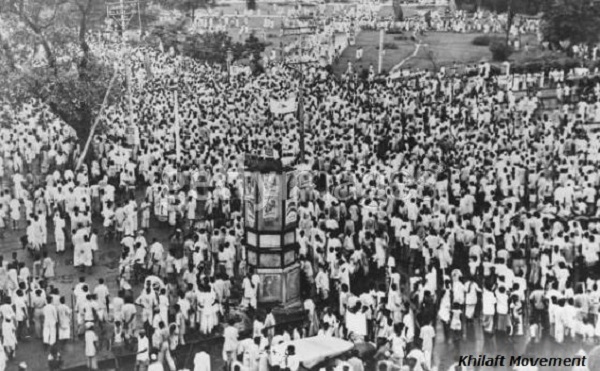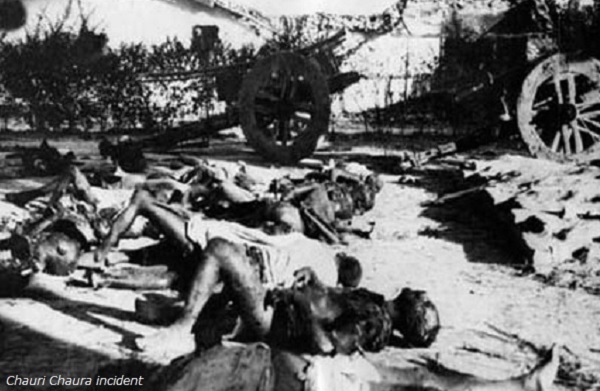
- Modern Indian History Tutorial
- Modern Indian History - Home
- Decline of Mughal Empire
- Bahadur Shah I
- Jahandar Shah
- Farrukh Siyar
- Muhammad Shah
- Nadir Shah’s Outbreak
- Ahmed Shah Abdali
- Causes of Decline of Mughal Empire
- South Indian States in 18th Century
- North Indian States in 18th Century
- Maratha Power
- Economic Conditions in 18th Century
- Social Conditions in 18th Century
- Status of Women
- Arts and Paintings
- Social Life
- The Beginnings of European Trade
- The Portuguese
- The Dutch
- The English
- East India Company (1600-1744)
- Internal Organization of Company
- Anglo-French Struggle in South India
- The British Conquest of India
- Mysore Conquest
- Lord Wellesley (1798-1805)
- Lord Hastings
- Consolidation of British Power
- Lord Dalhousie (1848-1856)
- British Administrative Policy
- British Economic Policies
- Transport and Communication
- Land Revenue Policy
- Administrative Structure
- Judicial Organization
- Social and cultural Policy
- Social and Cultural Awakening
- The Revolt of 1857
- Major Causes of 1857 Revolt
- Diffusion of 1857 Revolt
- Centers of 1857 Revolt
- Outcome of 1857 Revolt
- Criticism of 1857 Revolt
- Administrative Changes After 1858
- Provincial Administration
- Local Bodies
- Change in Army
- Public Service
- Relations with Princely States
- Administrative Policies
- Extreme Backward Social Services
- India & Her Neighbors
- Relation with Nepal
- Relation with Burma
- Relation with Afghanistan
- Relation with Tibet
- Relation with Sikkim
- Relation with Bhutan
- Economic Impact of British Rule
- Nationalist Movement (1858-1905)
- Predecessors of INC
- Indian National Congress
- INC & Reforms
- Religious & Social Reforms
- Religious Reformers
- Women’s Emancipation
- Struggle Against Caste
- Nationalist Movement (1905-1918)
- Partition of Bengal
- Indian National Congress (1905-1914)
- Muslim & Growth Communalism
- Home Rule Leagues
- Struggle for Swaraj
- Gandhi Assumes Leadership
- Jallianwalla Bagh Massacre
- Khilafat & Non-Cooperation
- Second Non-Cooperation Movement
- Civil Disobedience Movement II
- Government of India Act (1935)
- Growth of Socialist Ideas
- National Movement World War II
- Post-War Struggle
- Clement Attlee’s Declaration
- Reference & Disclaimer
Khilafat & Non-Cooperation Movement
The politically-conscious Muslims were critical of the treatment meted out to the Ottoman (or Turkish) Empire by Britain and its allies who had partitioned it and taken away Thrace from Turkey proper.
This was in violation of the earlier pledge of the British Premier, Lloyd George, who had declared: "Nor are we fighting to deprive Turkey of the rich and renowned lands of Asia Minor and Thrace which are predominantly Turkish in race."
The Muslims also felt that the position of the Sultan of Turkey, who was also regarded by many as the Caliph or the religious head of the Muslims, should not be undermined.
A Khilafat Committee was soon formed under the leadership of the Ali brothers, Maulana Azad, Hakim Ajmal Khan, and Hasrat Mohani, and a countrywide agitation was organized.
The All-India Khilafat Conference held at Delhi in November 1919, decided to withdraw all cooperation from the Government if their demands were not met.
The Muslim League, now under the leadership of nationalists, gave full support to the National Congress and its agitation on political issues.
The Congress leaders, including Lokamanya Tilak and Mahatma Gandhi, viewed the Khilafat agitation as a golden opportunity for cementing Hindu-Muslim unity and bringing the Muslim masses into the national movement.
The Congress leaders realized that different sections of the people—Hindus, Muslims, Sikhs and Christians, capitalists and workers, peasants and artisans, women and youth, and tribes and peoples of different regions—would come into the national movement through the experience of fighting for their own different demands and seeing that the alien regime stood in opposition to them.
In June 1920, an all-party conference met at Allahabad and approved a program of boycott of schools, colleges, and law courts.
The Khilafat Committee launched a non-cooperation movement on 31 August 1920.

The Congress met in special session in September 1920 at Calcutta. Only a few weeks earlier it had suffered a grievous loss—Lokamanya Tilak had passed away on 1 August at the age of 64.
The Congress supported Gandhi's plan for non-cooperation with the Government till the Punjab and Khilafat wrongs were removed and Swaraj established.
“The British people will have to beware,” declared Gandhiji at Nagpur, that if they do not want to do justice, it will be the bounden duty of every Indian to destroy the Empire.
The Nagpur session also made changes in the constitution of the Congress. Provincial Congress Committees were reorganized on the basis of linguistic areas.
Congress membership was thrown open to all men and women of the age of 21 or more on payment of 4 annas as annual subscription. However, in 1921, the age limit for membership was reduced to 18.
The years 1921 and 1922 witnessed an unprecedented movement of the Indian people. Thousands of students left government schools and colleges and joined national schools and colleges.
Hundreds of lawyers, including Chittaranjan Das (popularly known as Deshbandhu), Motilal Nehru, and Rajendra Prasad, gave up their legal practice.
The Tilak Swarajya Fund was started to finance the non-cooperation movement and within six months, over crore of rupees were subscribed.
Women showed great enthusiasm and freely offered their jewelry.
Huge bonfires of foreign cloth were organized all over the land.
Khadi soon became a symbol of freedom.
In July 1921, the All-India Khilafat Committee passed a resolution declaring that no Muslim should serve in the British Indian army.
In September, the Ali brothers were arrested for 'sedition'. Immediately, Gandhiji gave a call for repetition of this resolution at hundreds of meetings.
Fifty members of the All India Congress Committee issued a similar declaration that no Indian should serve the government which degraded India socially, economically, and politically.
By the end of 1921, all important nationalist leaders, except Gandhiji, were behind the bar along with 3,000 others.
In November 1921, huge demonstrations greeted the Prince of Wales, heir to the British throne, during his tour of India. He had been asked by the Government to come to India to encourage loyalty among the people and the princes.
In Bombay, the Government tried to suppress the demonstration by killing 53 persons and wounding about 400 or more.
The annual session of the Congress, meeting at Ahmedabad in December 1921, passed a resolution affirming "the fixed determination of the Congress to continue the program of non-violent non-cooperation with greater vigor than hitherto ….till the Punjab and Khilafat wrongs were redressed and Swarajya is established."
The resolution urged all Indians, and in particular students, "quietly and without any demonstration to offer themselves for arrest by belonging to the volunteer organizations."
All such Satyagrahis were to take a pledge to "remain non-violent in word and deed to promote unity among Hindus, Muslims, Sikhs, Parsis, Christians, and Jews, and to practice swadeshi and wear only khadi.
In Malabar (Northern Kerala), the Moplahs, or Muslim peasants, created a powerful anti-zamindar movement.
The Viceroy wrote to the Secretary of State in February 1919 that "The lower classes in the towns have been seriously affected by the non-cooperation movement.
On 1 February 1922, Mahatma Gandhi announced that he would start mass civil disobedience, including non-payment of taxes, unless within seven days the political prisoners were released and the press freed from government control.
Withdrawal of Civil Disobedience Movement
On 5 February 1922, a Congress procession of 3,000 peasants at Chauri Chaura, a village in the Gorakhpur District of U.P., was fired upon by the police. The angry crowd attacked and burnt the police station causing the death of 22 policemen.

Gandhiji took a very serious view of Chauri Chaura incident. It convinced him that the nationalist workers had not yet properly understood nor learnt the practice of non-violence without which, he was convinced, civil disobedience could not be a success.
Apart from the fact that Gandhiji would have nothing to do with violence, he also perhaps believed that the British would be able to crush easily a violent movement, for people had not yet built up enough strength and stamina to resist government repression.
Gandhiji, therefore, decided to suspend the nationalist campaign. The Congress Working Committee met at Bardoli in Gujarat on 12 February and passed a resolution stopping all activities, which would lead to breaking of laws.
The Bardoli resolution stunned the country and had a mixed reception among the nationalists, while some had implicit faith in Gandhiji, others resented this decision to retreat.
The first non-cooperation and civil disobedience movement virtually came to an end.
The Government arrested Mahatma Gandhiji on 10 March and charged him with spreading disaffection against the Government. Gandhiji was sentenced to six years imprisonment.
End of Khilafat Agitation
Very soon the Khilafat, question also lost relevance. The people of Turkey rose up under the leadership of Mustafa Kamal Pasha and, in November 1922, deprived the Sultan of his political power.
Kamal Pasha took many measures to modernize Turkey and to make it a secular state. He abolished the Caliphate (or the institution of the Caliph) and separated the state from religion by eliminating Islam from the Constitution.
Kamal Pasha nationalized education, granted women extensive rights, introduced legal codes based on European models, and took steps to develop agriculture and to introduce modern industries. All these steps broke the back of the Khilafat agitation.
In December 1922, Chittaranjan Das and Motilal Nehru formed the Congress-Khilafat Swaraj Party; Das as president and Motilal Nehru as one of the secretaries.
The communal elements took advantage of the situation to propagate their views and after 1923, the country was repeatedly plunged into communal riots.
The Muslim League and the Hindu Mahasabha, which was founded in December 1917, once again became active. The result was that the growing feeling that all people were Indians first received a set-back.
The Swarajist Party, whose main leaders, Motilal Nehru and Das, were staunch nationalists, was split by communalism.
A group known as “responsivists” including Madan Mohan Malviya, Lala Lajpat Rai, and N. C. Kelkar, offered cooperation to the Government so that the socalled Hindu interests might be safeguarded.
In September 1924, Gandhiji went on 21 days fast at Maulana Mohammed Ali’s house in Delhi to do penance for the inhumanity revealed in the communal riots. But his efforts were of little avail.